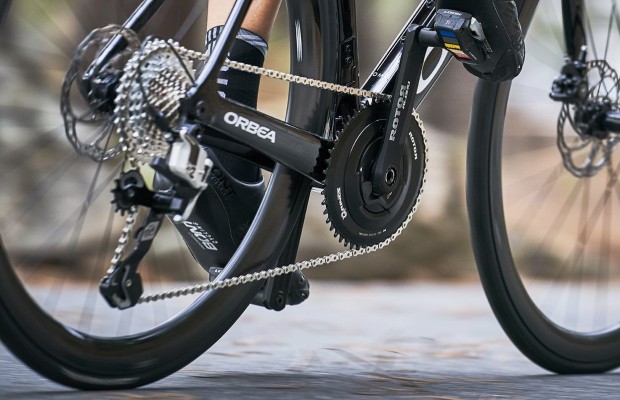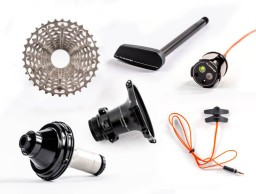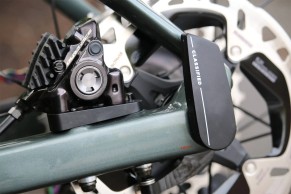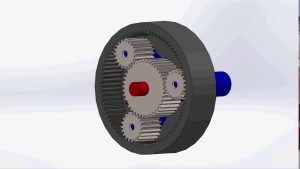What is the Classified Cycling drivetrain and why is it so interesting?
The best of the single chainring drivetrains with the amplitude and development scaling of the two chainrings. This is the idea behind Powershift, the rear hub system that transfers to this component the traditional chainring shifting which, despite the improvements in current groupsets, continues to be the weakest point of current drivetrains.

Say goodbye to derailleurs with Classified Cycling's Powershift drivetrain
Having the advantages of single and dual chainring drivetrains is possible thanks to the Powershift rear hub, which this week has returned to the limelight due to the boost received by the company that created this drivetrain, Powershift, after receiving a millionaire investment of 22 million euros, as reported by the portal road.cc by Active Partners, an investment fund already present in cycling in brands such as Rapha.
The drivetrains currently on the market are increasingly reliable and precise, however, if we ask any cyclist about their weakest point, they usually mention the system that allows changing chainrings. In fact, in disciplines such as mountain biking, where bikes are pushed to the limit, the front derailleur has long since been left out of mid and high-end bikes: chain slippage, snagging or rubbing against the derailleur are more or less recurrent problems.
RECOMENDADO

Black Friday 2025 cycling bargains: save on Garmin, POC, Maxxis and more

Black Friday Garmin 2025: the ultimate guide to choosing your GPS at the best price

How to wash your cycling clothes? 10 keys to make them always look new

Cycling can help you fight the effects of the time switch

Important keys to make your training work

Easy to apply tips for riding faster
 For their part, single chainring drivetrains, although more efficient and less prone to mechanical problems, still leave us with the dilemma of having to choose between good ratio scaling and having enough range to cope with all kinds of situations.
For their part, single chainring drivetrains, although more efficient and less prone to mechanical problems, still leave us with the dilemma of having to choose between good ratio scaling and having enough range to cope with all kinds of situations.
For years, there have been many alternative drivetrain systems, with hub-integrated gears such as the well-known Rohloff being reliable, efficient but impractical for the road cyclist. Systems that have always created expectations and attracted attention, but which, when it comes down to it, as is happening to Classified Cycling's Powershift, have had a very limited implementation in sports cycling.
What is Classified Powershift?
Classified Cycling's proposal with its Powershift is not new: a hub that houses a planetary gear system with which we can vary the gear ratio. The novelty presented by Powershift is to seek the maximum simplification of the system to make it compatible with conventional bikes.
That's why, instead of offering a hub with a complete set of ratios to replace the entire drivetrain, Classified Cycling chose to develop a hub with only two shifting options, trying to do without the front derailleur while keeping the rear sprockets and gears in an efficient and tested single chainring configuration, as we can see in the multitude of 1x gravel bikes on the market.

As well as being mounted on a standard-sized hub, Classified Cycling has worked on the interaction with the hub, which is done completely wirelessly. For this, there is a push button on the handlebars that allows you to switch between the two ratios available on the hub, which is connected to a Bluetooth transmission unit. This connects to the receiver located on the thru axle of the wheel, which houses the necessary electronics and the rechargeable battery that powers the system.
When a shift is made, the signal is transmitted to the axle and the axle transmits the shift command to the inside of the hub by electrical induction, eliminating the need for a battery inside the hub which only has the drive mechanism, all fully protected, ensuring minimal maintenance of the system.
How does a gear hub work?
Hubs integrating different gear ratios have existed since the beginning of the 20th century. Essentially, they consist of a fixed outer gear, around which several gears orbit, which reduce the gear ratio received by them before transmitting it to the gear on the shaft. By means of an actuation system, the system can be locked so that the rotation received by the outer ring is replicated on the wheel axle or, by activating the reduction with which the gears rotate, causing the reduction between the outer rotation and the resulting rotation on the axle.

Obviously, hubs that include a full set of gears include many more gears and operating combinations, which adds complexity to their design, often resulting in bulky bodies and increased friction. However, systems that allow two or three combinations, such as the one described above, are extremely simple and are not uncommon on city bikes.
Advantages of the Powershift
Using a Powershift hub on our bike allows us to have the advantages in terms of mechanical reliability of single chainring configurations but without the large shifting range of a dual chainring drivetrain, and the simplicity of the system, with only two ratios, makes it possible to avoid the main disadvantages of hub shifting.
Full hub gears have not been successful outside of urban or recreational cycling, mainly because the friction of their multiple gears is a significant performance penalty, something that has been reduced with the more advanced models which, thanks to specific lubrication, manage to reduce this problem to a minimum. However, they are still bulky systems that require compatible frames as well as specific cable routing for their operation.

Powershift, with its simplicity, reduces the problem of friction to a minimum, which also makes it possible to fit the system on a hub of conventional dimensions.
In addition, Powershift also boasts that it is designed to withstand shifting under full load, something impossible with a conventional chainring, while adding a tremendous shifting speed, according to the brand's own data, only 1500 ms.
A very promising system, with a lot of logic, which obviously needs the impetus of the brands being encouraged to mount it on their bikes, something which at the moment seems unfeasible given the power of the big groupset suppliers.